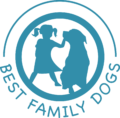
Dog Owning In The 1960’s
Have you ever wondered what owning a dog was like just a few decades ago? Innovations in dog healthcare have progressed veterinarian practice significantly. Considering one quarter of dogs at that time were random street roamers whether they were owned or not. Ownership rules and dog ethics were much less defined. Discover how innovations in dog healthcare have really changed what it means to be a dog owner in modern society.
Milk Bone was a fairly new company in the 1960’s, only catering to a very small market of dog owners. Most dogs lived off of daily table scraps and adding gravy over the dog’s dinner was a common dinner choice for most families that had a dog.
Women of the 1960’s really took a liking to small dogs breeds. Popularizing trends that still make small dogs sheik today. Fashion trends like dressing small dogs up with jewelled collars and cute dog clothing accessories.
What is interesting is the trends that have progressed innovations in dog healthcare and ethics. Veterinarian medicine trends have guided societal shifts in dog healthcare.
How Veterinarian Science Has Evolved
In the 1960’s the science of veterinarian medicine was an established degree that required a few “short” years of university education, in a time when most people were getting by on high school graduation or less. It wasn’t a very popular profession and took too long compared to many other job options available. There were few applicants and few graduates of the program. Innovation in dog healthcare was not a priority at this time.
Successful graduates were mostly male, and went on to work in remote areas of the country on farms. Specializing in treatment of illness and disease in large animals – bovine and equine. Veterinarian’s of the 1960’s also were trained in poultry disease treatment. Animal medicine was really focused on promoting farm animal viability for the human food industry sales and consumption.
Veterinarian Medicine of the 1990’s: From Farms To Homes
By the 1990’s radical shifts have occurred in veterinarian science. First off, a university degree is becoming more recognized as standard education for the work force. Well not mandatory for job obtainment in many fields, applicants with degrees are generally regarded as having more job opportunities and better pay with more social benefits. The 1990’s also sees more women students entering medical and science programs, including veterinarian sciences. However, the majority of students and professors remain male.
Veterinarian clinics have been popping up all over the country to serve domesticated house hold pets who become ill or have an accident or need palliation. The medical approach is still largely on treating the problem, illness or disease. New ideas for disease prevention and health education are just beginning to cause another shift in veterinarian focus. From on-demand vaccinations to spaying and neutering for population control, leading themes show a broader shift in practice as veterinary medicine expands to meet the early needs of globalization. Innovation in dog healthcare is just beginning to progress.

Current Practices in Veterinary Medicine
Owing a dog today, or any pet for that matter, really shows how our animals have become part of our family. Today, most veterinarians suggest vet insurance, run expensive top-of-the-line technology to diagnosis every condition you bring your dog to the vet for.
In a gender fluid society, does gender really matter anymore? For the sake of statistics, veterinarians are now mostly female, with female enrolment higher than male enrolment at universities. Many program professors are now female as well. Veterinarian programs takes several years to complete, as they cover a wide range of animal disease and health promotion practices for domesticated and live-stock animal care. Universities now providing highly specialized degree programs. The shift towards health promotion and prevention continues and is in full bore! Veterinarian medicine today takes a proactive, preventative approach. Vaccines are recommended from puppyhood throughout your dog’s life span to prevent disease. Spaying and neutering is done routinely. Dogs are living longer and veterinarian medicine is prepared to care for them with medication, advise and therapeutic healers that offer a range of symptom control and promote longevity. These innovations in dog healthcare have progressed the profession.
Innovation in Dog Healthcare Influences Dog Ownership
We are at a huge advantage to live in this age of technology and indulgence. There are so many choices of dog food and treats that are as home-grown and healthy as our human grade food. Adding to a bunch of challenging but fun decisions is which brand to chose for your dog.
Mass globalization has even provided more choices for adoption than ever before! Do you want a pet store puppy? A breeder’s high-end show dog? Adopt a dog from a shelter? Adopt an old dog to enhance the last stage of their life and provide palliation and love? Today, there are so many resources available to help you make the right decision.
Today the pet supply industry is overflowing with modern toys and supplies and gimmicks for your new puppy, or adult dog. And senior dogs are getting treated like never before – with advances in dog health and wellness and insurance coverage. Owning a dog has never presented such complex medical and ethical challenges as it does today due to all the innovations in dog healthcare.
Dogs Have Really Become Part of Our Families
Dogs have become deeply embedded in our family units. They may experience separation and divorce like children, sharing time between parents at different households.
In some families they are the children. As more people chose to remain single, or have relationships and chose not to have children, or can not have children, getting a dog or dogs is becoming a more popular option. Dogs in these situations get all the love and the owners also get emotional fulfilment. Owning a dog is also cheaper than owning human children. Since the average child costs 14,000$ a year until age 18 (Associated Press, 2017). In comparison, dog ownership costs 1000$ a year per dog. Dog ownership has a shorter time line. Instead of lifetime ownership – with dogs you get a shorter journey of lasting memories and can chose to continue or not at another time. Making dogs a more flexible, affordable investment anytime!
Innovations in Dog Healthcare Has Advanced, But Dogs Love Remains Unconditional
In the last 60 years the world has seen great advancements in dog owning, training, supplies and innovations in dog healthcare. There are 89.7 million dog owners in the US in 2017 driving market demand and defining trends in dog healthcare. Even the way veterinarians are educated and run their practice has gone through radical transitions. Technology, innovation and best practice research is the driving force in the animal healthcare system we have today. But still over all this time, a dog’s unconditional love has not changed.


